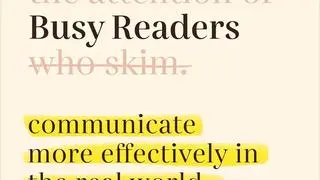The book has a simple cover — a black and white photograph of a curly haired woman with a mischievous smile. And it was the cover of Women in the Wild: Stories of India’s Most Brilliant Women Wildlife Biologists that first caught my attention. An unfamiliar face to many, for herpetologists (who study reptiles and amphibians), the girl on the cover is nothing short of a legend.
J. Vijaya, or Viji to those who knew her well, had a short and tragic life. But in that time, she proved to be one of the most incredible field biologists, among men or women, that India has seen.
While she loved all animals, turtles were her fascination, and she is credited with rediscovering the forest cane turtle thought to have been extinct. Field biology perceived as an unsafe profession and the wild not a “proper” place for women would not hold Vijaya back from living for months in a forest cave or conducting research on a shoe-string budget if it meant furthering the cause of turtle conservation.
This year four women were honoured with the Nobel Prize — a rarity since the awards were instituted in 1901. In India, the unrecognised role of women in science has been receiving increasing attention.
Books like Lab Hopping and platforms such as BiasWatchIndia are calling out the gender-bias and sexism in the sciences. Women in the Wild is thus a timely contribution showing that field biology traditionally perceived as a career for men has, like Vijaya, more than its share of impactful women.
Nine profiles
Anita Mani’s carefully curated book profiles nine women wildlife biologists who have worked in a range of landscapes and ecosystems — tropical forests, oak forests, high altitude mountains, and coastal areas.
Even for those familiar with wildlife conservation in India the book offers a few hidden gems starting with the very first chapter. Jamal Ara, the first among women conservationist in the country was held in the highest regard by none other than Salim Ali the “Birdman of India”.
Jamal Ara was much more than an ornithologist or a keen naturalist. Only a tenth standard pass, she was a prolific writer of articles on nature and short stories, an All-India Radio broadcaster, a translator par excellence, and briefly even a journalist.
Another little-known biologist featured is Usha Ganguli-Lachungpa who was deterred by her family from pursuing a career in veterinary science but went on to become a gifted naturalist. While Viji has a turtle genus named after her, Usha has a species of grass named to honor her extensive work on Sikkim’s biodiversity.
The women featured are not just scientists. Some are detectives solving complex mysteries. Like Uma Ramakrishnan, a molecular biologist, unravelling secrets about India’s tiger population by examining the DNA of tiger or scat. Or Vidya Athreya cracking the connection between leopard translocation and attacks contributing to mitigating human-wildlife conflict.
Engaging communities
While a love for nature drew many into the field, their work over the years has shown them the imperative to engage with government, NGOs and most importantly with local communities.
Divya Karnad’s passion for sea turtle conservation could not let her turn a blind eye to the poverty of the fishing community who shared space with the turtles. She retrained herself to understand how conservation interventions could benefit both people and wildlife.
For Nandini Velho studying predation of fruiting trees in the Pakke Tiger Reserve in Arunachal Pradesh would not suffice if the landscapes and communities where the trees stood were themselves at threat. Becoming an activist was as meaningful to her, if not more, along with being a wildlife biologist.
Divya Mudappa persists with her ecological restoration work amidst its ups, but more than its share of terrible, downs — a reflection of the dogged determination that characterises these women.
For Ghazala Shahabuddin investing in training local youth and teaching them to connect with nature is as important as her work on protecting the ecosystem of oak stands in the Himalayas that she has been studying for decades.
Young biologists
How many more such profiles of women in the wild would suffice? There can never be enough. as the last chapter shows. The young wildlife biologists featured are engaged in fascinating research as speleologists studying cave ecosystems or acoustic ecologists gauging the health of ecosystems using sound.
Women in the Wild demands to be read — especially by the youth today who are increasingly disconnected from the natural world amidst an unfolding ecological crisis. The book shows the trials and triumphs of a few, among many, women wildlife biologists India.
But also, profiles a remarkable group of women who have understood that to save the planet for future generations science will not suffice. It requires we all take a stand because as Nandini Velho asks ‘Else, who will speak for the sparrow?’
The reviewer is with Azim Premji University
Check it out on Amazon.









Comments
Comments have to be in English, and in full sentences. They cannot be abusive or personal. Please abide by our community guidelines for posting your comments.
We have migrated to a new commenting platform. If you are already a registered user of TheHindu Businessline and logged in, you may continue to engage with our articles. If you do not have an account please register and login to post comments. Users can access their older comments by logging into their accounts on Vuukle.